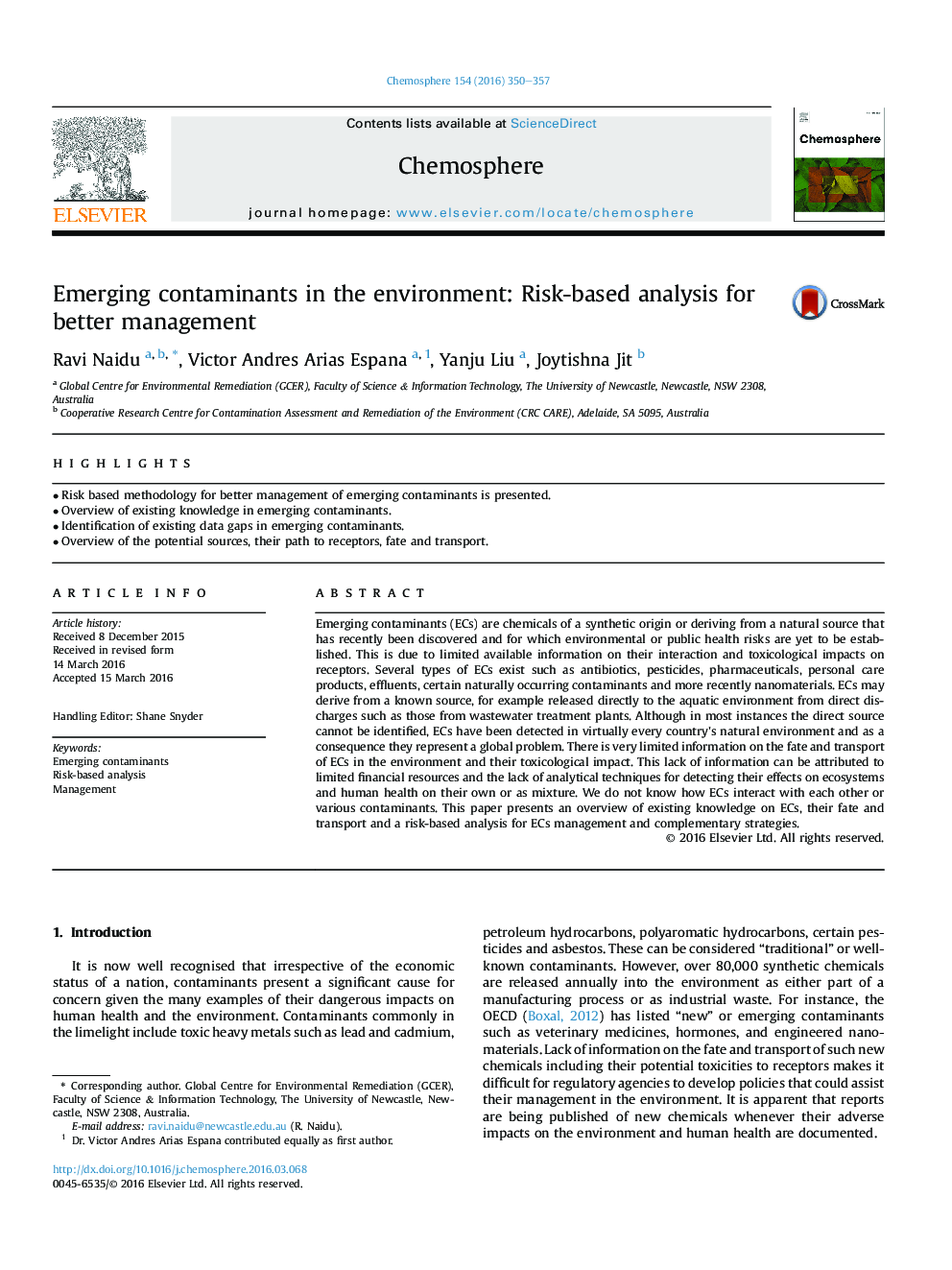| Article ID | Journal | Published Year | Pages | File Type |
|---|---|---|---|---|
| 6306740 | Chemosphere | 2016 | 8 Pages |
Abstract
Emerging contaminants (ECs) are chemicals of a synthetic origin or deriving from a natural source that has recently been discovered and for which environmental or public health risks are yet to be established. This is due to limited available information on their interaction and toxicological impacts on receptors. Several types of ECs exist such as antibiotics, pesticides, pharmaceuticals, personal care products, effluents, certain naturally occurring contaminants and more recently nanomaterials. ECs may derive from a known source, for example released directly to the aquatic environment from direct discharges such as those from wastewater treatment plants. Although in most instances the direct source cannot be identified, ECs have been detected in virtually every country's natural environment and as a consequence they represent a global problem. There is very limited information on the fate and transport of ECs in the environment and their toxicological impact. This lack of information can be attributed to limited financial resources and the lack of analytical techniques for detecting their effects on ecosystems and human health on their own or as mixture. We do not know how ECs interact with each other or various contaminants. This paper presents an overview of existing knowledge on ECs, their fate and transport and a risk-based analysis for ECs management and complementary strategies.
Keywords
Related Topics
Life Sciences
Environmental Science
Environmental Chemistry
Authors
Ravi Naidu, Victor Andres Arias Espana, Yanju Liu, Joytishna Jit,
